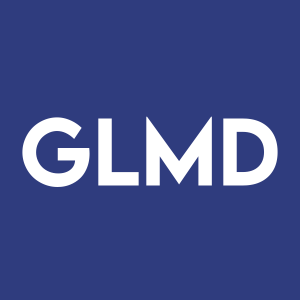Galmed Announces Grant of New Patent for the Combination of Aramchol with Resmetirom (MGL-3196, REZDIFFRA) for the Treatment of NASH and Liver Fibrosis
- None.
- None.
Insights
The grant of a European patent for the combination therapy of Aramchol and Resmetirom by Galmed Pharmaceuticals represents a strategic move to secure the company's intellectual property rights in key markets. This development is particularly noteworthy as it extends the patent protection of Aramchol until 2039, thereby potentially increasing the product's lifecycle and revenue stream for an extended period. The inclusion of major European countries such as France, Germany, Italy, the Netherlands and the United Kingdom underscores the significance of the patent in safeguarding market share in these territories.
From a competitive standpoint, the unique mechanism of action of Aramchol, which targets stearoyl-CoA desaturase-1 (SCD1) in hepatic stellate cells, could differentiate it in a crowded NASH/MASH treatment landscape. This differentiation is important given the high prevalence and unmet medical need in the treatment of liver fibrosis associated with these conditions. The patent not only protects the combination therapy but also may deter competitors from entering the space with similar mechanisms, potentially resulting in a stronger position for Galmed in negotiations with partners or in attracting acquisition interest.
The recent patent grant for the combination therapy involving Aramchol and Resmetirom highlights Galmed's commitment to addressing NASH/MASH, diseases with significant unmet medical needs. The Open-Label part of the Phase 3 NASH study showing high rates of fibrosis improvement with Aramchol 300mg BID is encouraging and suggests a promising future for the drug if the results are consistent in the larger, blinded cohort of the study. Such clinical outcomes are key in determining the commercial success of a drug, as they directly influence regulatory approvals and market adoption.
Moreover, the combination therapy approach aligns with current scientific understanding that NASH is a multifactorial disease, often requiring a multi-modal treatment strategy. By targeting different aspects of the disease pathology, the combination of Aramchol and Resmetirom could potentially offer a more comprehensive treatment option, improving patient outcomes and potentially justifying premium pricing strategies upon market entry. The anticipation of patent approval in the United States and other countries could further bolster Galmed's market position, subject to the demonstration of clinical efficacy and safety in ongoing studies.
Previously, Galmed reported results from the Open-Label part of its Phase 3 NASH study, which demonstrated that treatment with Aramchol 300mg BID resulted in a high rate of subjects with fibrosis improvement. https://galmedpharma.investorroom.com/2022-04-28-Galmed-reports-interim-results-from-the-Open-Label-part-of-the-ARMOR-study-with-Aramchol-showing-robust-fibrosis-improvement-across-multimodality-histological-assessment
Galmed has long believed that the optimum treatment for NASH/MASH will be combination therapy. Aramchol has been shown to down-regulate the expression and activity of stearoyl-CoA desaturase-1 (SCD1) in hepatic stellate cells, resulting in a direct effect on fibrogenesis. Aramchol's unique mechanism of action differs from others in its competitive landscape, positioning it to work as a potent anti-fibrotic compound alongside effective treatments in both approved and pre-approval stages.
Allen Baharaff, CEO and President of Galmed Pharmaceuticals mentioned that "this new patent for the combination of Aramchol and Resmetirom reflects the same spirit of earlier patents which were granted to Galmed by the United States Patent and Trademark
Office (USPTO) for the treatment for hepatic fibrosis." Mr. Baharaff continued "It is clear today that NASH is a chronic condition with multiple liver pathologies. Among all pathologies,
excessive liver fat, high glycemic index and fibrosis are major treatment challenges. By combining Aramchol and Resmetirom, two distinct and selective compounds with complementary mechanisms, we believe this will provide a perfect treatment for NASH."
About Galmed Pharmaceuticals Ltd.
We are a clinical stage biopharmaceutical company focused on the development of Aramchol for liver and fibro-inflammatory diseases. We have focused almost exclusively on developing Aramchol for the treatment of NASH and are currently developing Aramchol for PSC and exploring the feasibility of developing Aramchol for other fibro-inflammatory indications outside of liver disease. We are also collaborating with the Hebrew University in the development of Amilo-5MER, a 5 amino acid synthetic peptide.
Forward-Looking Statements:
Forward-looking statements relate to anticipated or expected events, activities, trends or results as of the date they are made. Because forward-looking statements relate to matters that have not yet occurred, these statements are inherently subject to risks and uncertainties that could cause our actual results to differ materially from any future results expressed or implied by the forward-looking statements. Forward-looking statements may include, but are not limited to, statements relating to our objectives plans and strategies, as well as statements, other than historical facts, that address activities, events or developments that we intend, expect, project, believesor anticipate will or may occur in the future. Many factors could cause our actual activities or results to differ materially from the activities and results anticipated in forward-looking statements, including, but not limited to, the timing and cost of any pre-clinical or clinical trial, for our product candidates; completion and receiving favorable results of any pre-clinical or clinical trial; regulatory action with respect to Aramchol or any other product candidate by the
SOURCE Galmed Pharmaceuticals Ltd.







